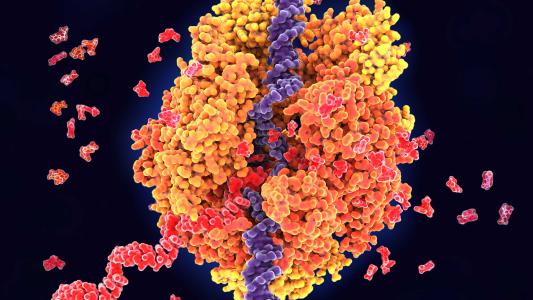A study involving more than 600 people on the frontlines of the COVID-19 pandemic has found that wearables can detect coronavirus symptoms up to three days before people even start to feel sick.
The researchers behind that study are now expanding it to include more than 10,000 volunteers, and if their findings hold up in this larger population, it could mean we already have an effective, noninvasive early warning symptom for COVID-19 on our hands.
The Oura Ring
In March, Finnish entrepreneur Petri Hollmén wrote on Facebook that an alert from his Oura Ring — a smart ring that tracks body temperature and other vital signs — was the first indication that he had the coronavirus.
Soon after, researchers from the West Virginia University Rockefeller Neuroscience Institute (RNI) and WVU Medicine partnered with the ring’s maker, Oura Health, to launch a study to determine whether wearables can detect coronavirus symptoms early in other people.
To start, they developed a smartphone app that collects biometric data from the Oura Ring, including increased body temperature, respiratory rate, and sleep patterns. The app also gives users the ability to directly input physiological, cognitive, and behavioral data — they might note increased feelings of stress or anxiety, for example.
The researchers then distributed the app and hundreds of Oura Rings to healthcare workers, using information from early participants to develop AI-based prediction models. Within three weeks, they found their system could predict coronavirus symptoms 24 hours before onset.
More than 600 people are now involved in the Oura Ring study, and according to the researchers’ latest report, the wearables can detect coronavirus symptoms 72 hours prior to onset with 90% accuracy.
A Wearable Weapon Against COVID-19
Hollmén’s experience is a perfect example of how knowing that wearables can detect coronavirus symptoms early could help us stem the spread of COVID-19.
Even though he felt fine, his Oura Ring detected an incredibly minor drop in his temperature (1.8 degrees Fahrenheit) caused by his coronavirus infection. Ten days after he wrote his Facebook post, the San Francisco Chronicle noted that he still “felt few symptoms.”
That means that, without his ring’s alert, he might never have gotten tested for the coronavirus and known to self-isolate.
Hollmén’s lack of noticeable symptoms isn’t remarkable. Though pinning down an exact figure has proven difficult, studies suggest that more than half of all coronavirus cases may be asymptomatic or presymptomatic — a situation that has made it incredibly difficult to stem the virus’s spread.
One in five Americans already owns some sort of wearable fitness tracker, though, so if other types of wearables can detect coronavirus symptoms early, the devices could tip off a big chunk of the population to coronavirus infections they might never have noticed otherwise.
We’d love to hear from you! If you have a comment about this article or if you have a tip for a future Freethink story, please email us at [email protected].






